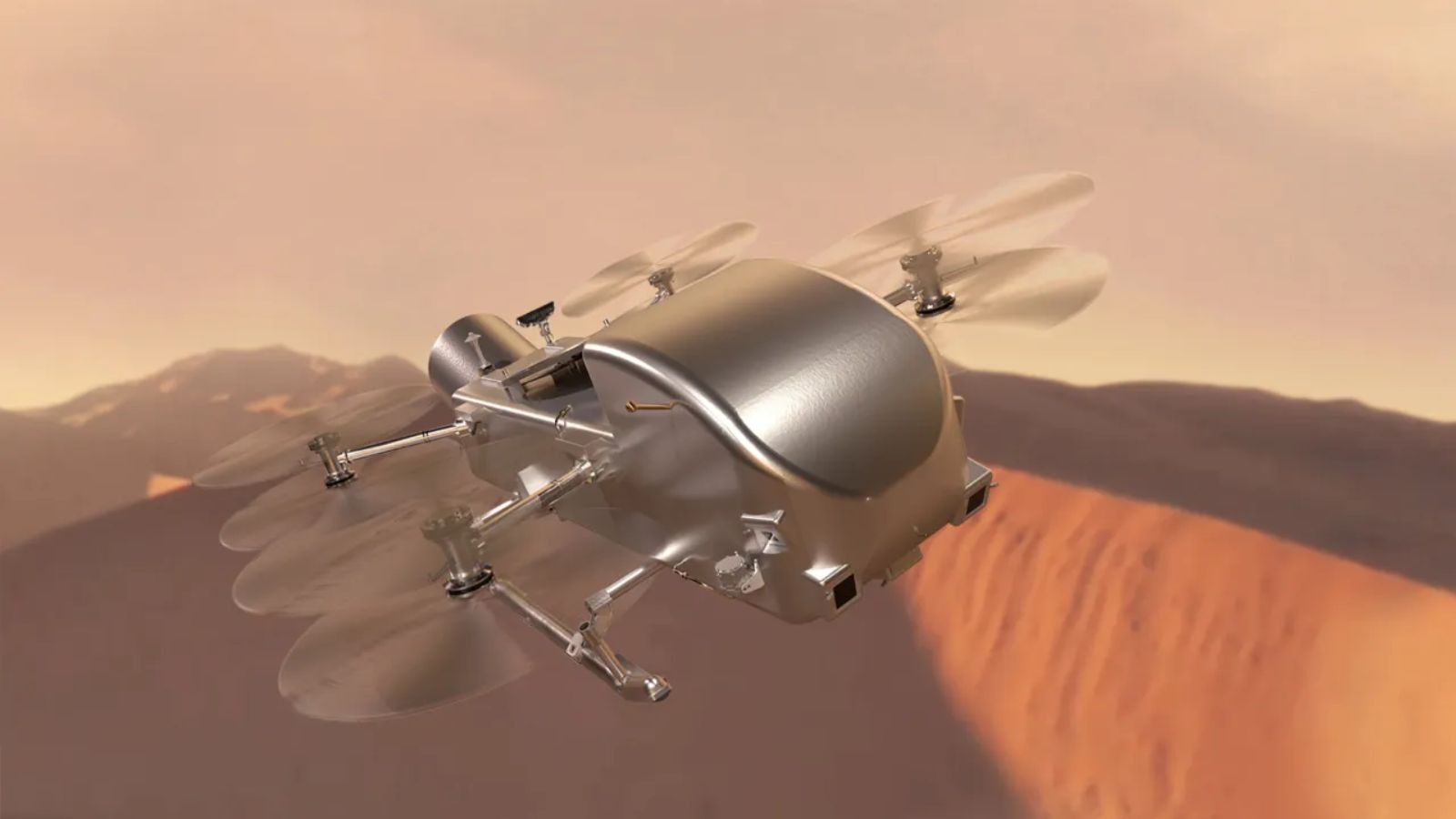NASA on Tuesday confirmed Dragonfly rotorcraft mission to Saturn’s organic compound-rich moon Titan with a budget of $3.35 billion and a launch date set for July 2028.
The Dragonfly mission passed all the criteria of its Preliminary Design Review in early 2023 but it was asked to develop an updated budget and schedule to fit into the current budget of the space agency. This updated plan was presented and then conditionally approved in November 2023.
Dragonfly was confirmed with the release of the US President’s Fiscal Year 2025 Budget Request, with a two-times cost increase and a delay of more than two years from its originally intended launch window selected in 2019. But to compensate for this delay, NASA will provide extra funding for a heavy-lift launch vehicle so that the time spent cruising to the Saturnian moon is reduced.
The car-sized “dual-quadcopter” cover tens of kilometres on Titan in under an hour, which is a massive distance as far as currently available extra-planetary rotorcraft are concerned. Titan’s dense and calm atmosphere coupled with its low gravity makes flying an ideal way to travel to its different parts. During the planned two-year mission, Dragonfly will cover several hundred kilometres.
Despite being a rotorcraft, it will spend most of its time on the moon’s surface making science measurements. The hazy atmosphere on Titan will make it difficult to use solar power, meaning that it will use a radioisotope power system like the Curiosity rover on Mars. All flights, data transmission and most science operations will happen during the day, meaning that it will have a lot of time to recharge during night on Titan.

The largest moon of Saturn has for long taken high priority when it comes to planetary exploration. It is an ocean world and is the only moon in our solar system with a dense atmosphere. It also supports an Earth-like hydrological cycle with methane clouds, rain and liquid flowing across the surface. There is also a lot of organic material accessible on Titan’s surface.
Put all that together and Titan is an ideal place to study the conditions necessary for habitability in an extraterrestrial environment. Even if we don’t find signs of life there, there is a chance we could observe the kind of chemical interactions that happened before life developed on Earth.
© IE Online Media Services Pvt Ltd
First uploaded on: 18-04-2024 at 19:25 IST

Shambhu Kumar is a science communicator, making complex scientific topics accessible to all. His articles explore breakthroughs in various scientific disciplines, from space exploration to cutting-edge research.


